VW premieres the ID.7: carmaker is going the long haul
With the almost five-metre-long ID.7 saloon, Volkswagen has unveiled its new interim electric flagship. With a new drive system and battery size, the ID.7 is trimmed for range and comfort and intended for Passat clientele in Europe – but the 700 km range should also be a convincing argument in the US and China.
The variant with the much-quoted 700-kilometre range is the ID.7 Pro S. This range, which is only an internal forecast and not an official WLTP measurement, is possible thanks to the new, improved electric drive with the designation APP550. We summarised the details of this 210 kW drive unit here.
The ID.7 features the largest battery of any VW EV to date. The power storage unit in the ID.7 Pro S offers a usable net energy content of 86 kWh (91 kWh gross). However, this is not a further developed replacement for the 77 kWh battery. The latter remains on offer in the ID.7 Pro – with a range of up to 615 kilometres.
Also important, of course, are the aerodynamics. The flat saloon body glides through the wind better than a taller ID.4. The length of a whopping 4.96 metres (2.97-metre wheelbase) combined with the curved tail helps guide the air around the body better. Numerous details at the front and rear (such as air curtains at the front or the striking tear-off edge on the boot lid) should contribute to better airflow. The result for the ID.7 is a drag coefficient of “approximately” 0.23. VW does not want to give an exact figure, as drag also depends on the equipment. The frontal area is 2.45 square metres.
Back to the powertrains: Both batteries are combined with the newly developed drive system. However, whether both versions will also come with 210 kW power is not explicitly confirmed in the announcement – the ID.7 Pro with 77 kWh may get slightly less power. Until now, VW offered 150 kW for this battery with the old drive unit. What is clear, however, is that the charging power of the 77 kWh battery will remain at the known 170 kW at its peak; with the new 86 kWh battery, it will be up to 200 kW at its peak. VW does not yet specify the charging time. The ID.7 finally gets battery preconditioning, automatically bringing the battery to the optimal temperature before a charging stop.
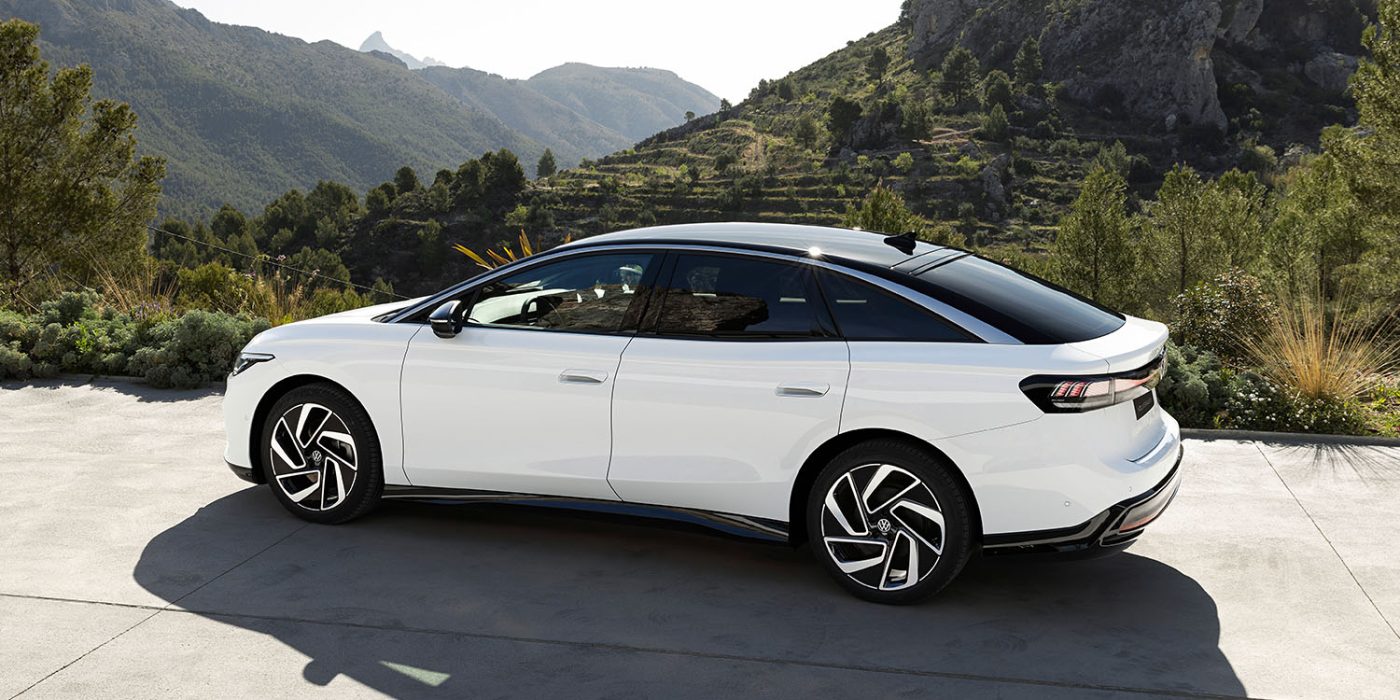
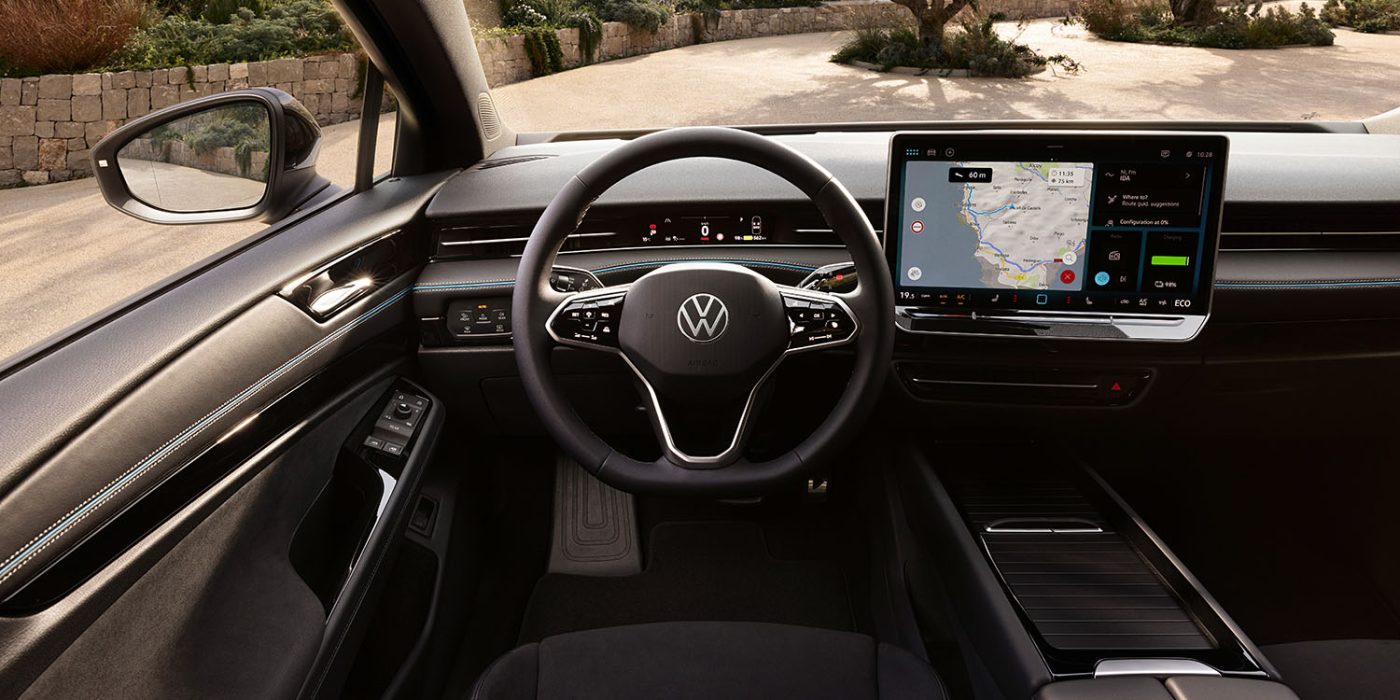
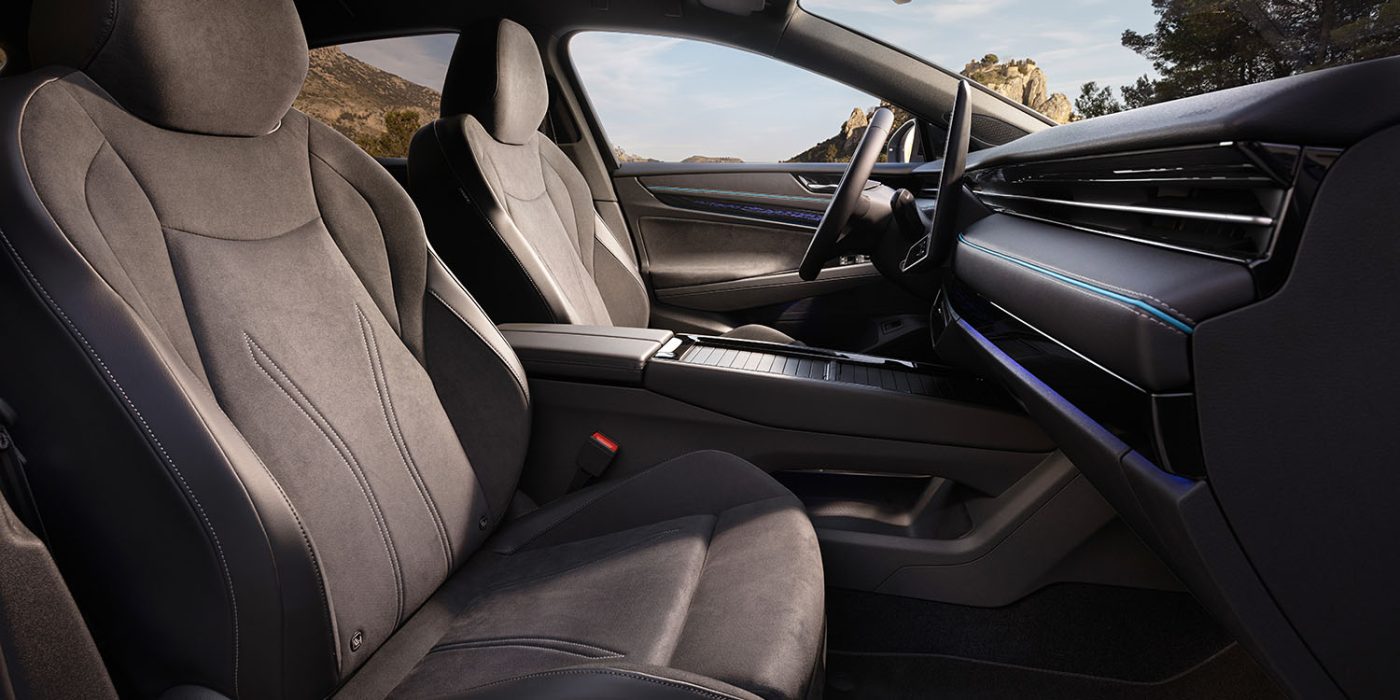
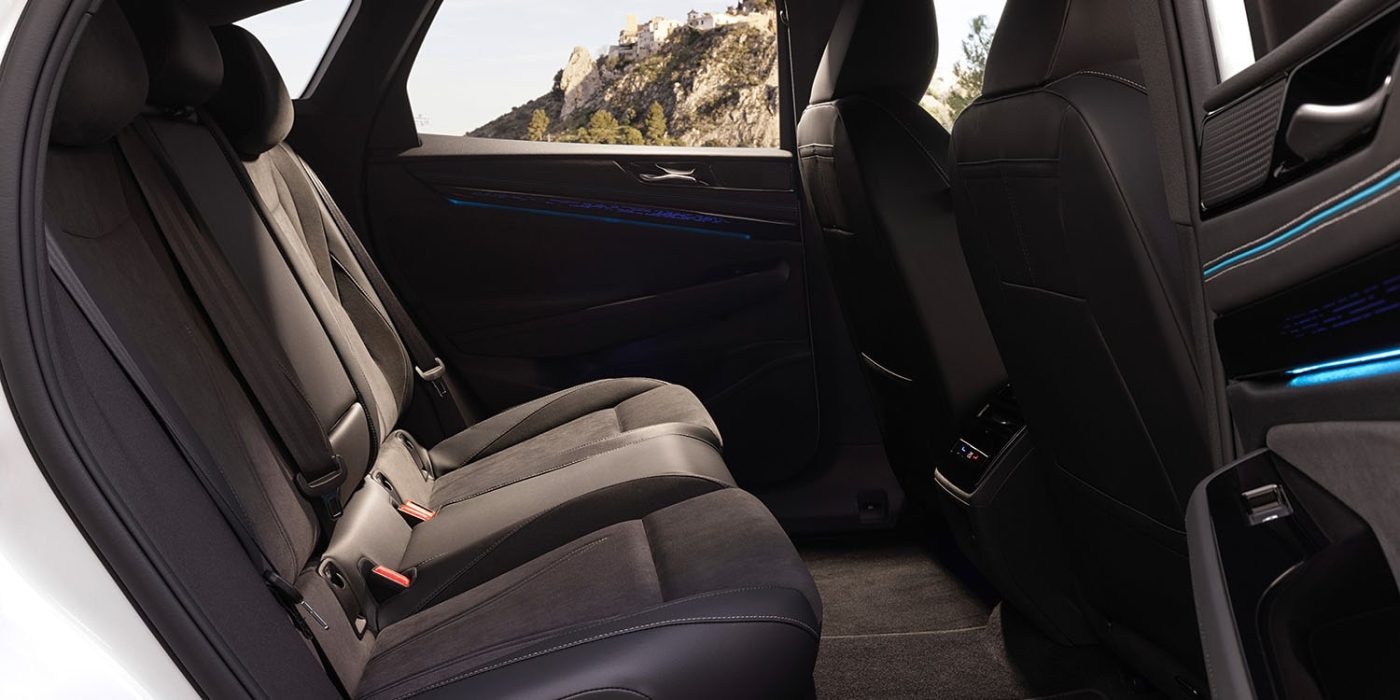
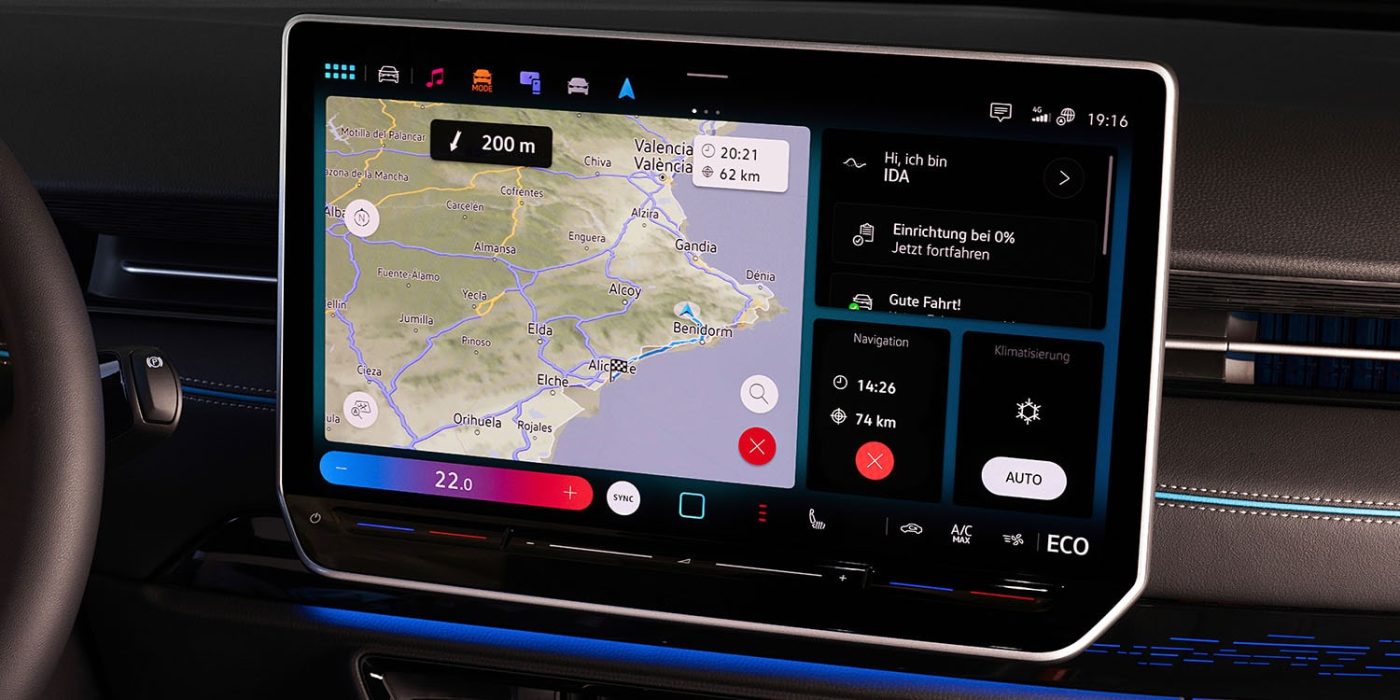
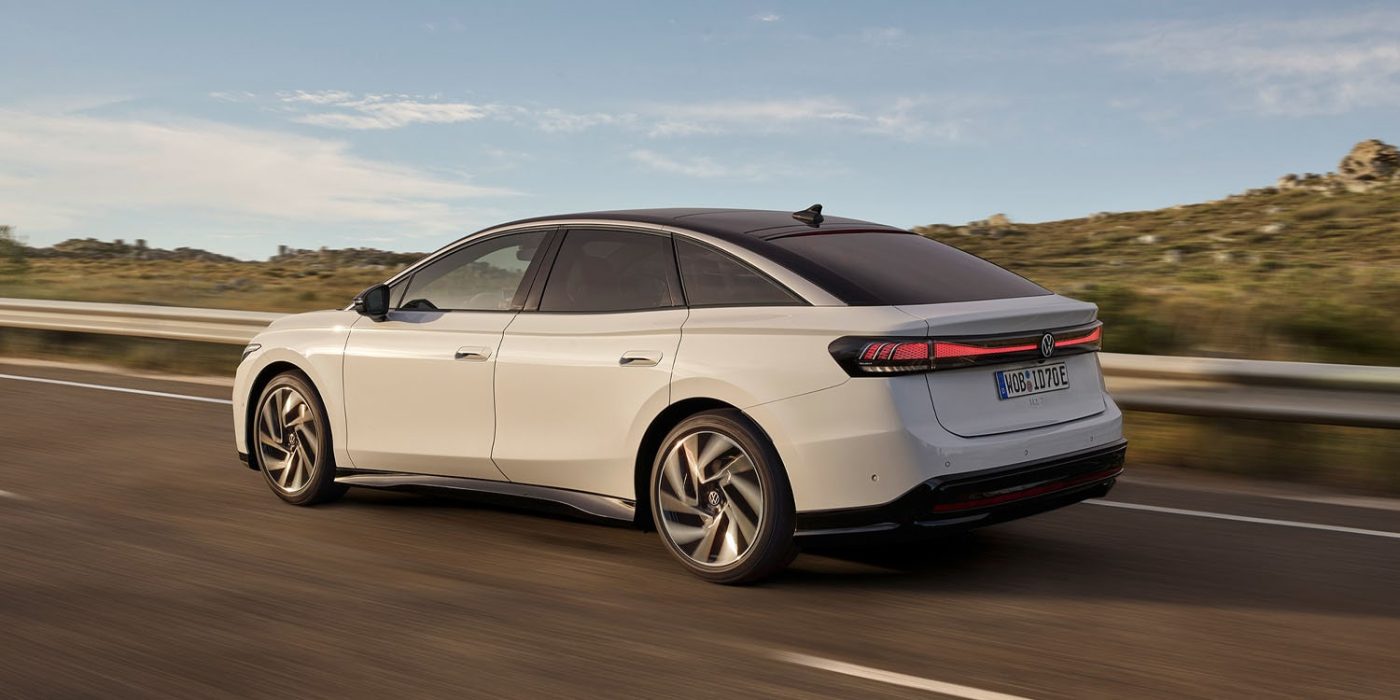
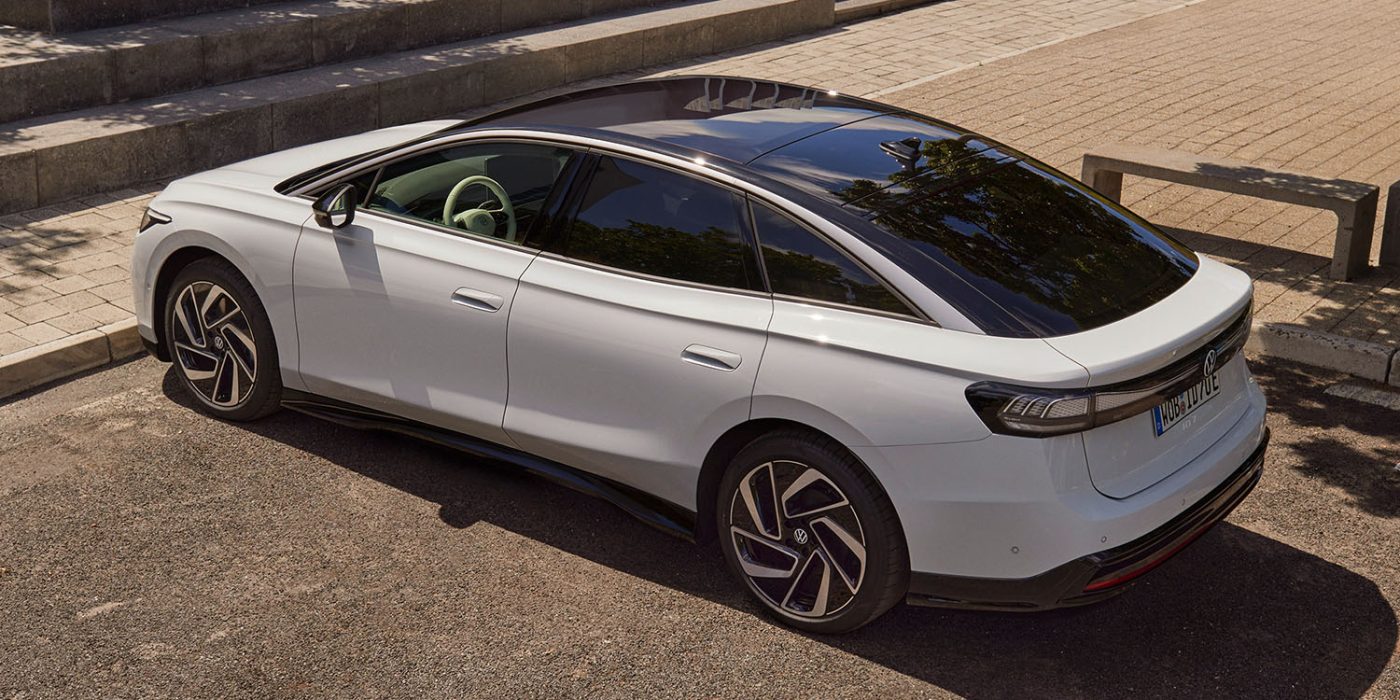
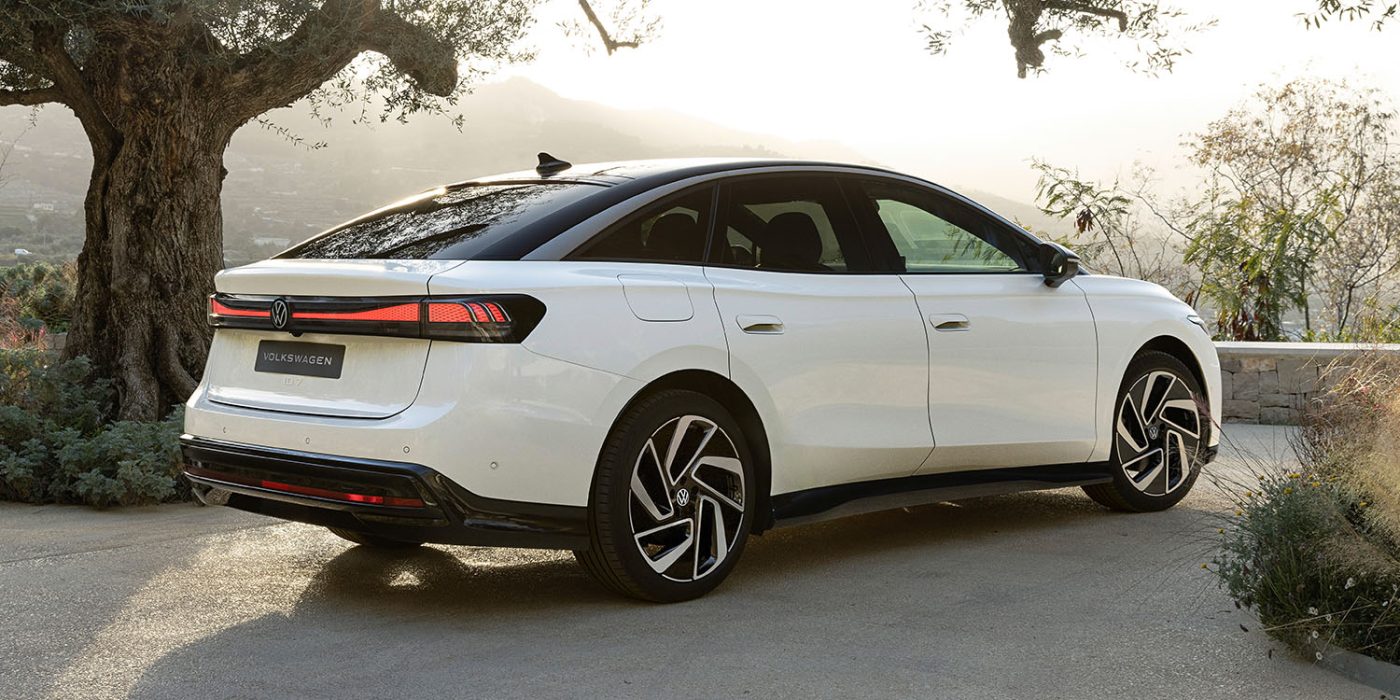
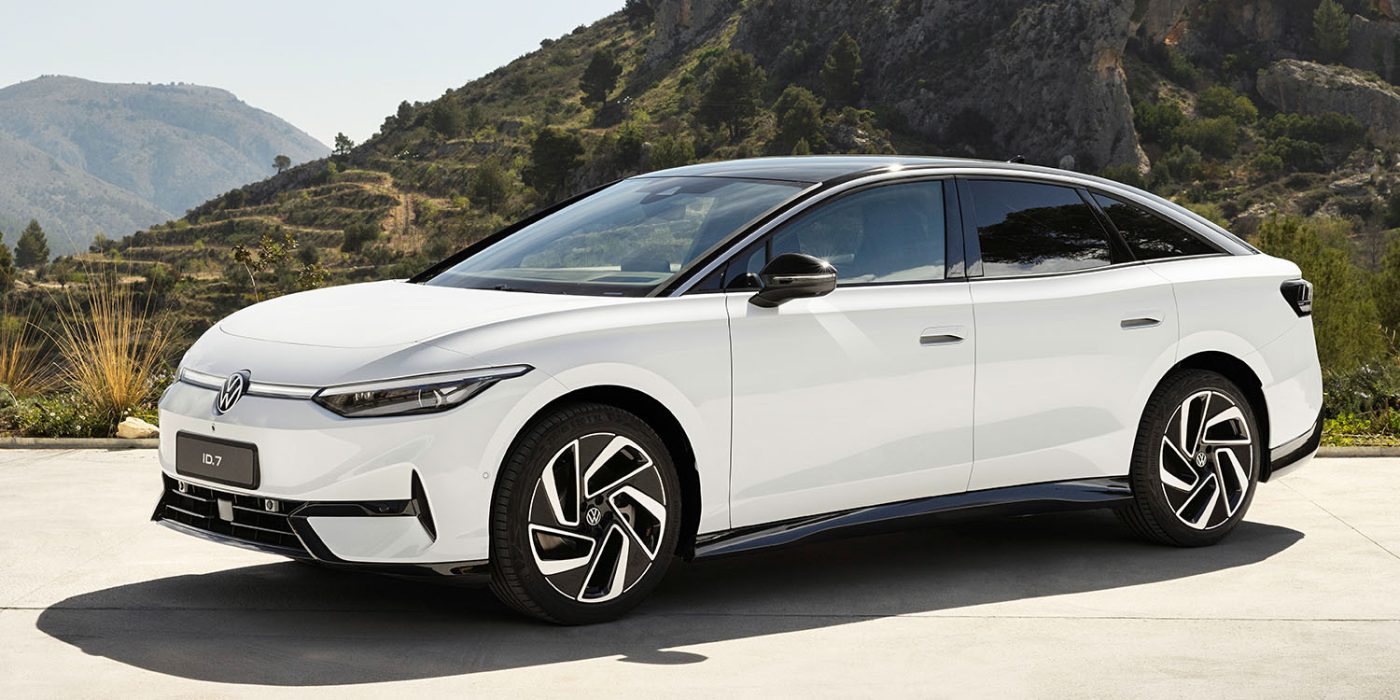
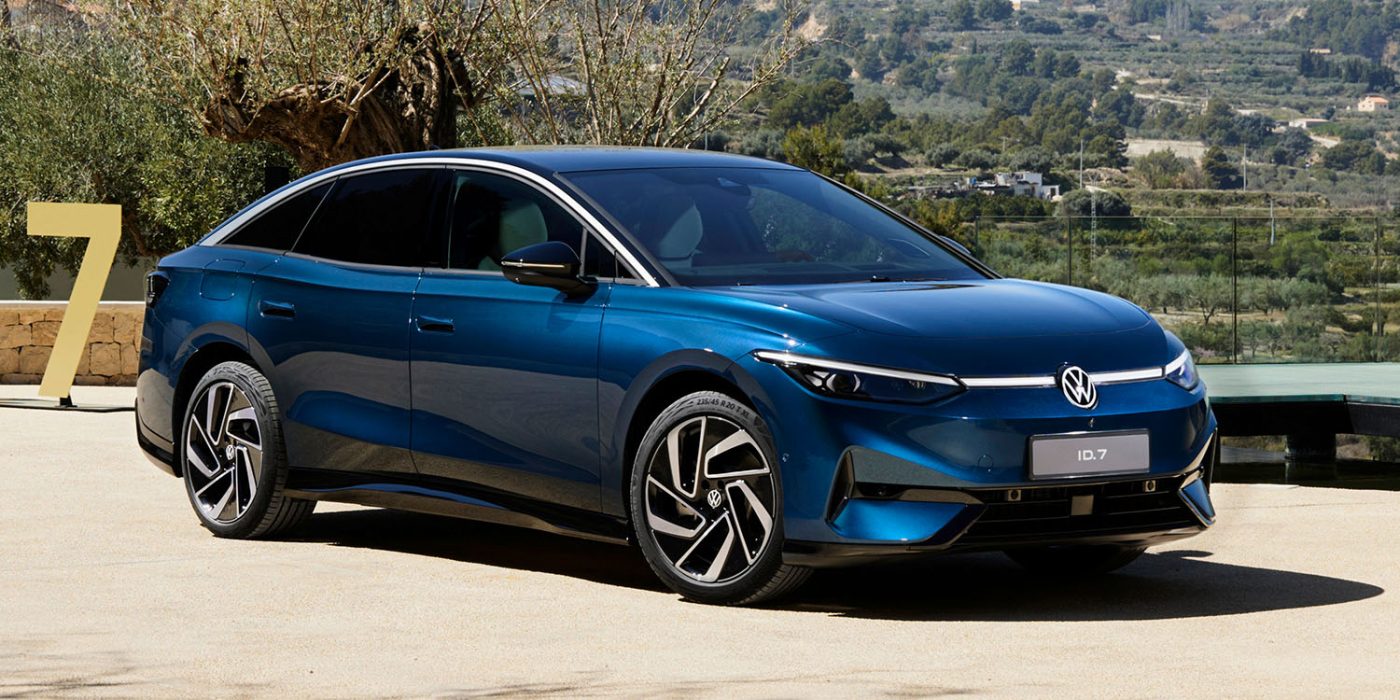
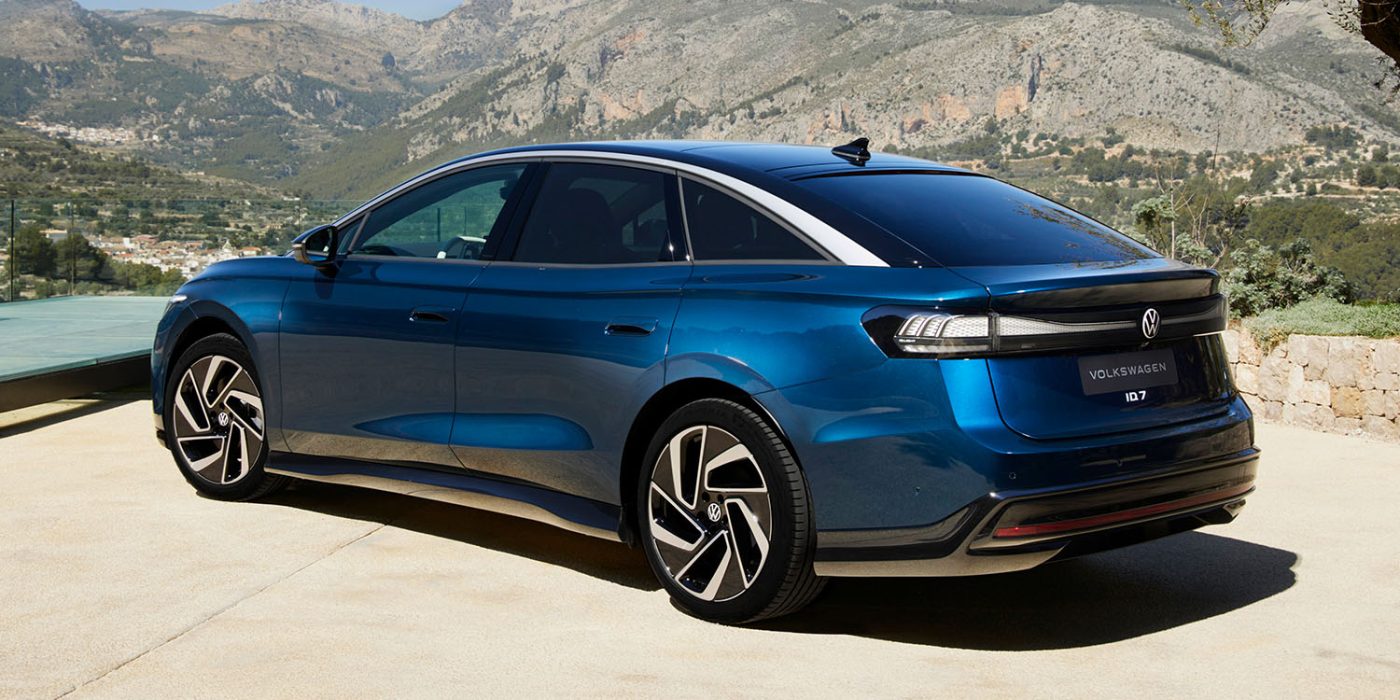
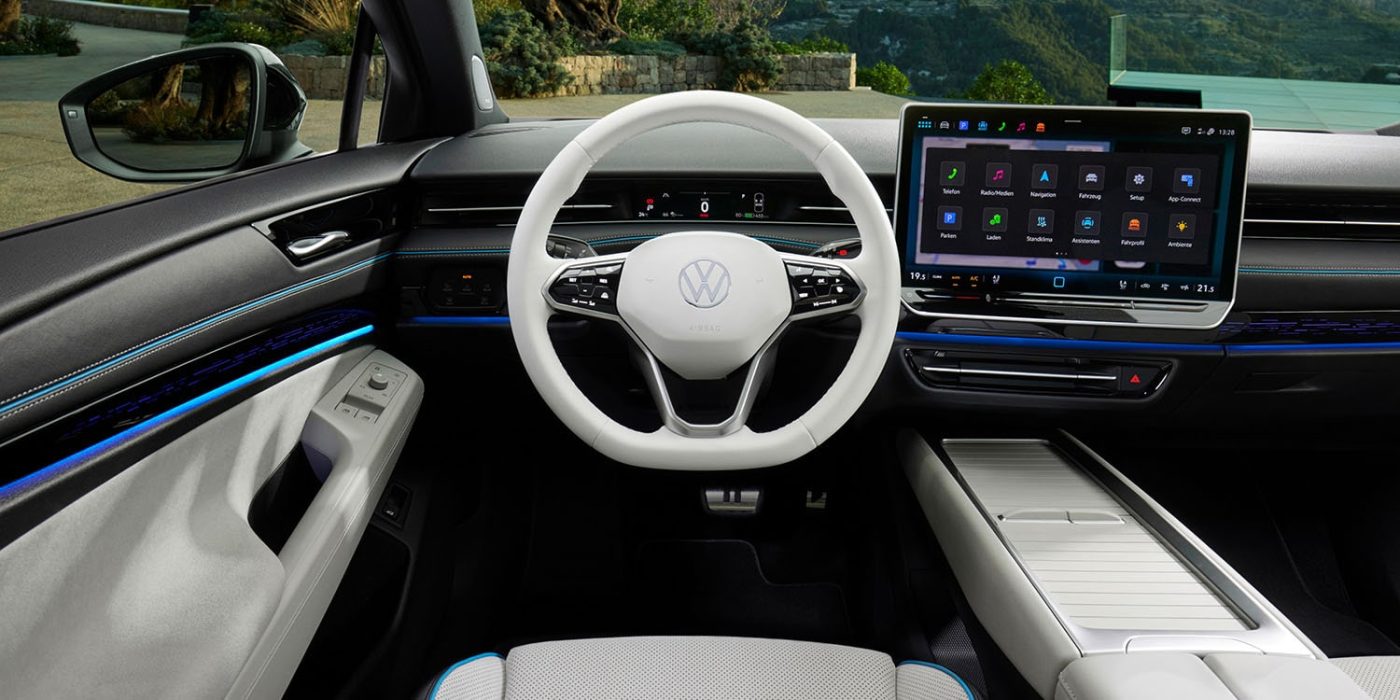
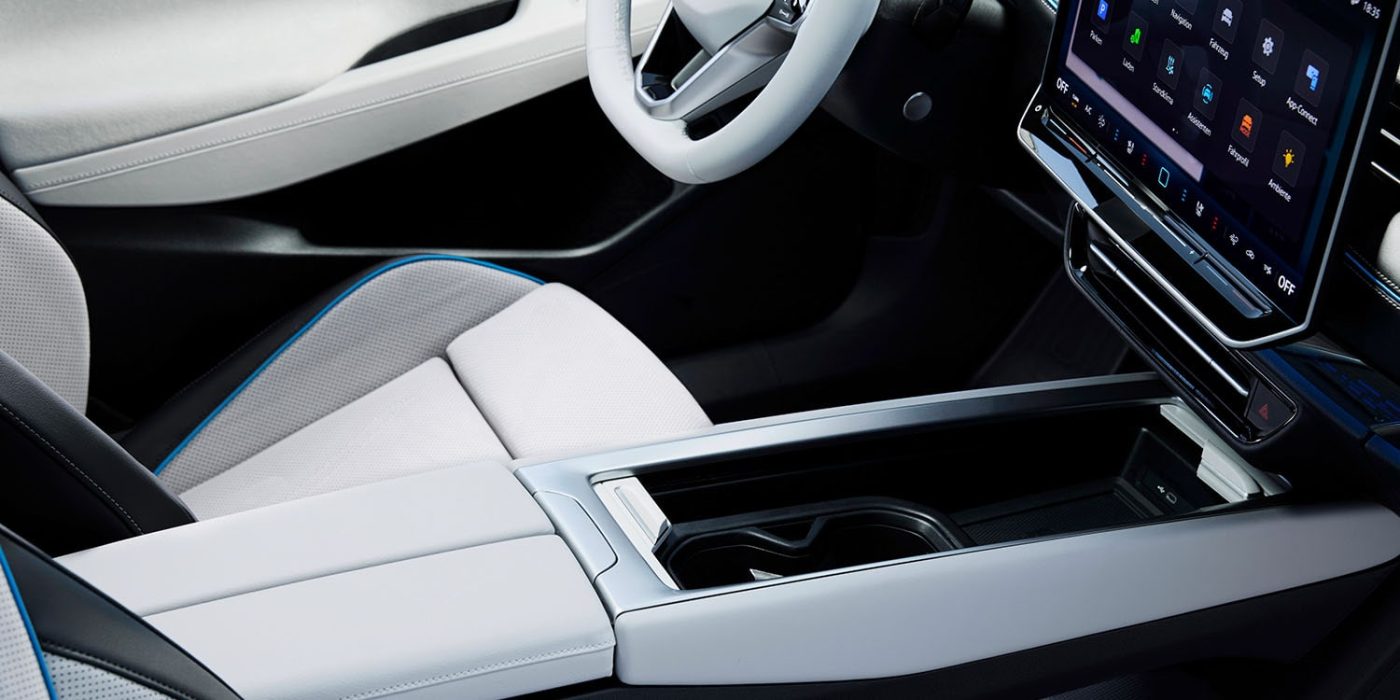
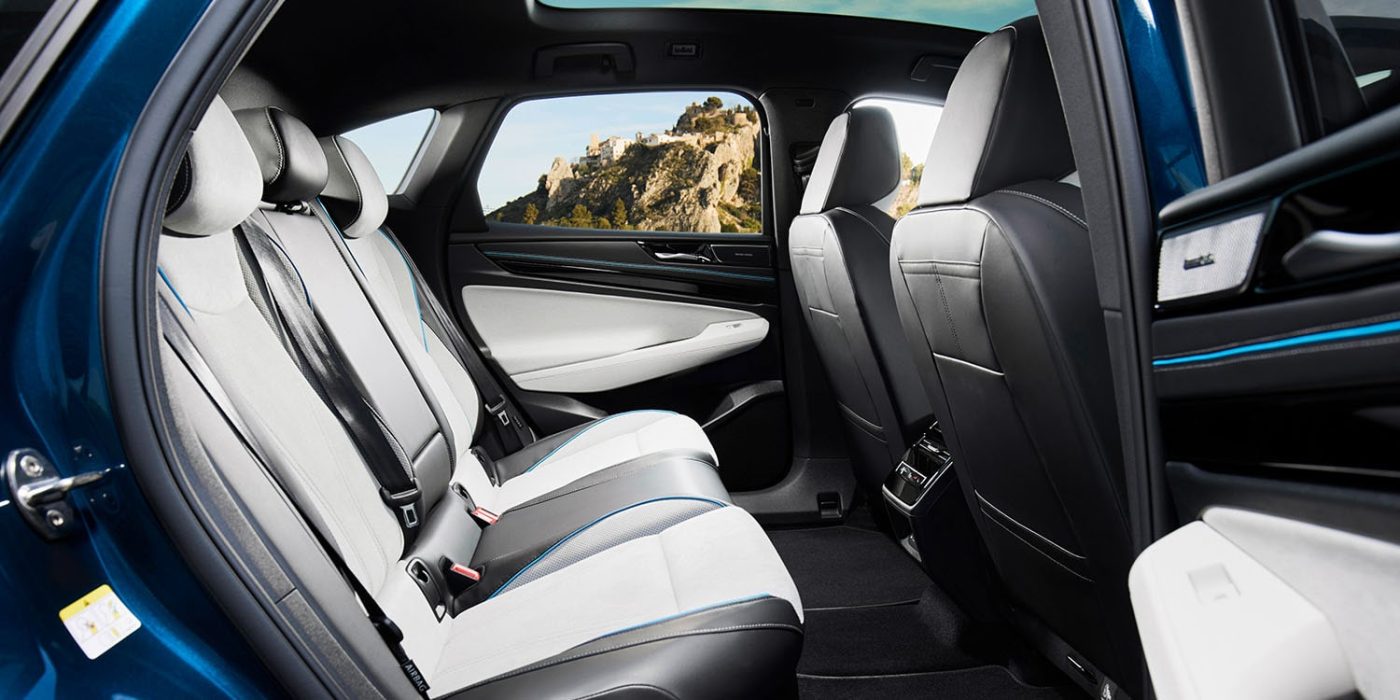
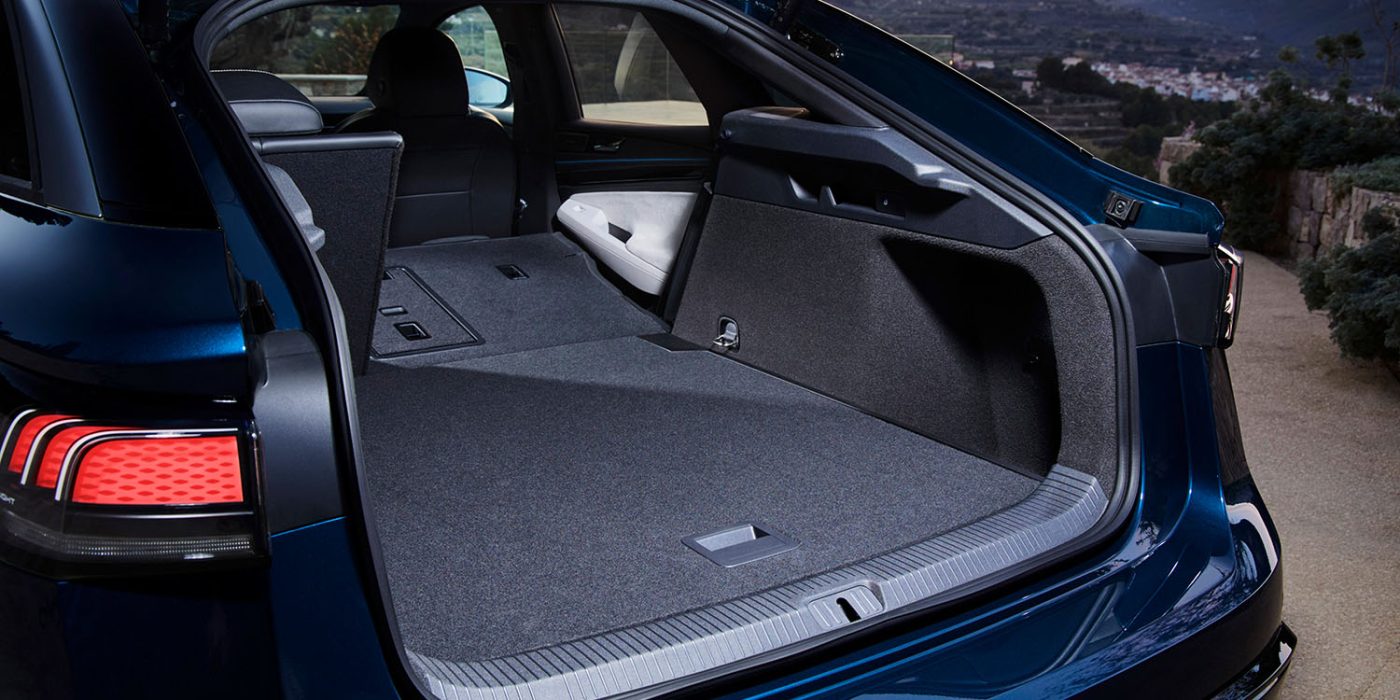
ID.7 is trimmed for long-distance comfort
The aforementioned wheelbase of 2.97 metres creates space for the slightly larger battery and ensures more room inside – regardless of whether you make full use of it with five adults, including luggage, or enjoy the feeling of space. And a long wheelbase improves straight-line stability, which should offer stable and pleasant handling on long journeys.
And that is what VW says it optimised its electric car for, even beyond the more efficient drive and the larger battery. The assistance systems with the familiar “Travel Assist with swarm data” (e.g. automated lane changes on the motorway) are intended to aid the driver. The newly developed front seats offer an optional “adaptive seat climatronic” that independently controls seat heating and cooling. In addition, a “sophisticated new massage function” is supposed to provide further relaxation.
Since the augmented reality head-up display, which is optional in other ID. models, is also factory-fitted in the ID.7, the designers have also redesigned the cockpit. Previously placed on the steering column, the speedometer display is now integrated into the dashboard. In the designers’ logic, it should be needed less anyway, as the driver gets all the necessary information displayed on the windscreen.
The thus reduced dashboard with an integrated air vent is only interrupted by the free-standing 15-inch touchscreen. It runs the next-generation infotainment system with a new graphic interface and further developed menu navigation. “The goal here was to make operation of all functions as simple, intuitive and personalisable as possible. For this purpose, the display was divided into two permanently visible touch bars and the home screen,” VW says. And: The touch sliders below the display (e.g. interior temperature and volume) are now illuminated.
Another new feature compared to other ID. models is the optional “Smart Glass” panorama roof. A layer of special liquid crystals is integrated into the glass surface. If an electric voltage is applied to these crystals, they sort themselves so light can pass through. If no voltage is applied, the crystals arrange themselves to make the glass opaque. The switching process is activated by touch control in the roof console or via voice assistant. A few years ago, Mercedes integrated a similar solution into the glass roof of its SLC roadster model.
ID.7 launches with 77 kWh battery, new battery option to follow later
Regardless of the glass roof and the seats that automatically heat and cool according to temperature or humidity, it is already clear that the ID.7 will initially only be launched as the ID.7 Pro with the 77 kWh battery at the planned European sales launch in autumn (pre-sales from summer). VW has yet to announce when exactly the ID.7 Pro S with 86 kWh will follow. From 2024, the Wolfsburg company also wants to offer the model in North America – like the European vehicles, the US variants will also be built at the Emden plant. That means that if there is no agreement between the US government and the EU on the eligibility of electric cars assembled outside North America, the ID.7 could miss out on the EV tax credit of up to $7,500 in the US.
The situation is different again in China, where the ID.7 will be built and sold locally by VW joint ventures, as usual. According to initial registrations with the responsible ministry, only one variant of the ID.7 has been registered in China for the time being – with a 150 kW engine and a 77 kWh battery from FAW-CATL. It is unknown whether the new 210 kW engine with the larger battery will also come to China.
Reporting by Sebastian Schaal, Germany.



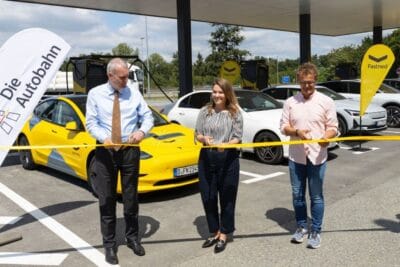
0 Comments